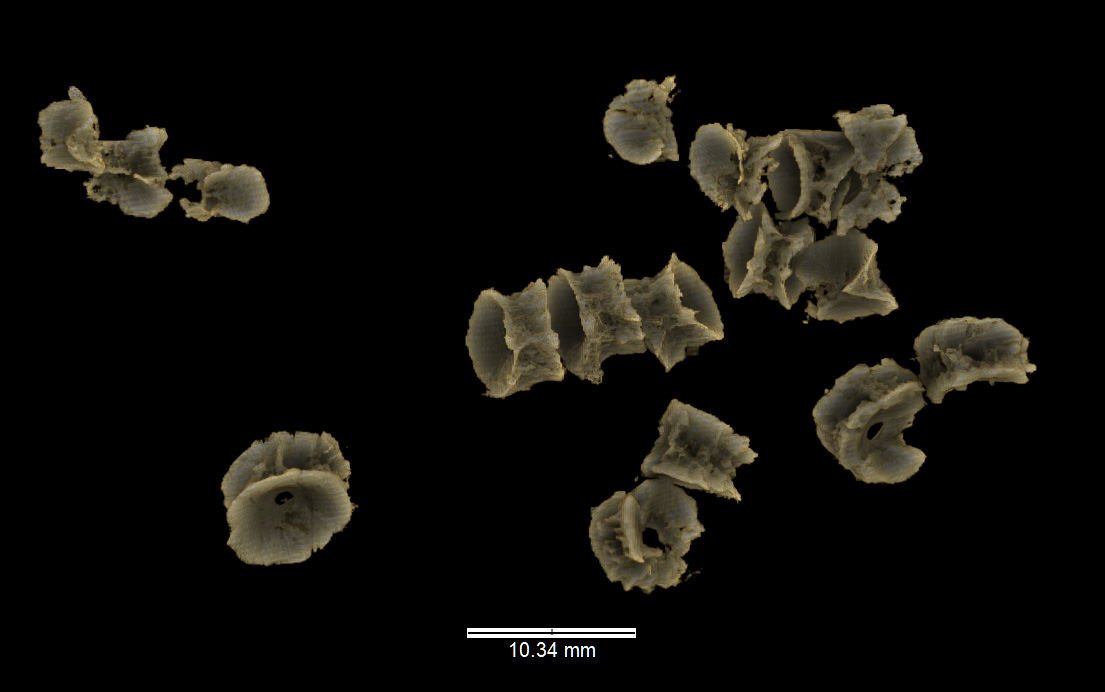Eric the plesiosaur’s last meal

Australian National University (ANU) and Australian Museum Research Institute (AMRI) researchers have discovered 17 vertebrae of an unidentified fish inside the fossilised gut of the plesiosaur (Umoonasaurus demoscyllus) called Eric .
Using X-ray technology, researchers created a 3D model of the stomach without damaging the opalised fossil of the prehistoric predator.
CT imagery also revealed 60 gastroliths, or stomach stones.
“Eric was a mid-tier predator, the equivalent of a sea lion, that ate small fish and was likely preyed upon by larger apex predators,” says Joshua White from the ANU Research School of Physics and AMRI.
The aquatic reptile was 2.5m long and lived in Australian waters during the Cretaceous Period (141-65 million years ago). Its remains were discovered in 1987 by an opal miner in Coober Pedy.
“We are also lucky that Eric is one of the most complete opalised vertebrae skeletons in Australia,” Joshua says.
“The fossil is approximately 93 per cent complete, which is pretty much unheard of in any fossil record. There is practically nowhere else other than Australia that can actually get opalised vertebrae fossils.”
The research was published in Alcheringa: An Australasian Journal of Palaeontology.







